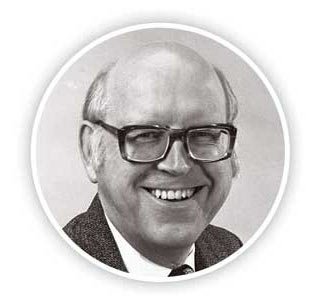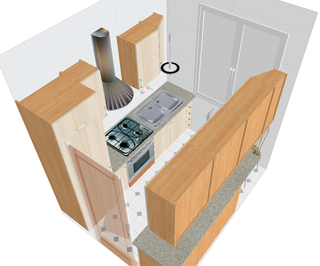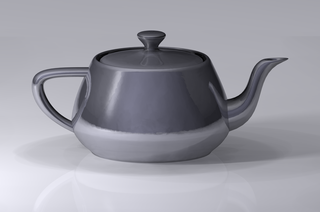The Association for Computing Machinery (ACM) is a US-based international learned society for computing. It was founded in 1947 and is the world's largest scientific and educational computing society. The ACM is a non-profit professional membership group, reporting nearly 110,000 student and professional members as of 2022. Its headquarters are in New York City.
CiteSeerX is a public search engine and digital library for scientific and academic papers, primarily in the fields of computer and information science.

Allen Newell was an American researcher in computer science and cognitive psychology at the RAND Corporation and at Carnegie Mellon University's School of Computer Science, Tepper School of Business, and Department of Psychology. He contributed to the Information Processing Language (1956) and two of the earliest AI programs, the Logic Theorist (1956) and the General Problem Solver (1957). He was awarded the ACM's A.M. Turing Award along with Herbert A. Simon in 1975 for their contributions to artificial intelligence and the psychology of human cognition.
Theoretical computer science is a subfield of computer science and mathematics that focuses on the abstract and mathematical foundations of computation.
The Association for the Advancement of Artificial Intelligence (AAAI) is an international scientific society devoted to promote research in, and responsible use of, artificial intelligence. AAAI also aims to increase public understanding of artificial intelligence (AI), improve the teaching and training of AI practitioners, and provide guidance for research planners and funders concerning the importance and potential of current AI developments and future directions.

Computer-aided technologies (CAx) is the use of computer technology to aid in the design, analysis, and manufacture of products.

Computer-aided architectural design (CAAD) software programs are the repository of accurate and comprehensive records of buildings and are used by architects and architectural companies for architectural design and architectural engineering. As the latter often involve floor plan designs CAAD software greatly simplifies this task.
SIGDA, Association for Computing Machinery's Special Interest Group on Design Automation, is a professional development organization for the Electronic Design Automation (EDA) community. SIGDA is organized and operated exclusively for educational, scientific, and technical purposes in electronic design automation. SIGDA's bylaws were approved in 1969, following the charter of SIC in Design Automation in 1965.
The terms design computing and other relevant terms including design and computation and computational design refer to the study and practice of design activities through the application and development of novel ideas and techniques in computing. One of the early groups to coin this term was the Key Centre of Design Computing and Cognition at the University of Sydney in Australia, which for nearly fifty years pioneered the research, teaching, and consulting of design and computational technologies. This group organised the academic conference series "Artificial Intelligence in Design (AID)" published by Springer during that period. AID was later renamed "Design Computing and Cognition (DCC)" and is currently a leading biannual conference in the field. Other notable groups in this area are the Design and Computation group at Massachusetts Institute of Technology's School of Architecture + Planning and the Computational Design group at Georgia Tech.

Mark A. Horowitz is an American electrical engineer, computer scientist, inventor, and entrepreneur who is the Yahoo! Founders Professor in the School of Engineering and the Fortinet Founders Chair of the Department of Electrical Engineering at Stanford University. He holds a joint appointment in the Electrical Engineering and Computer Science departments and previously served as the Chair of the Electrical Engineering department from 2008 to 2012. He is a co-founder, the former chairman, and the former chief scientist of Rambus Inc.. Horowitz has authored over 700 published conference and research papers and is among the most highly-cited computer architects of all time. He is a prolific inventor and holds 374 patents as of 2023.
IEEE Computer Society is a technical society of the Institute of Electrical and Electronics Engineers (IEEE) dedicated to computing, namely the major areas of hardware, software, standards and people, "advancing the theory, practice, and application of computer and information processing science and technology." It was founded in 1946 and is the largest of 39 technical societies organized under the IEEE Technical Activities Board with over 375,000 members in 150 countries, more that 100,000 being based in the United States alone.
Computer-aided architectural engineering (CAAE) is the use of information technology for architectural engineering, in tasks such as the analysis, simulation, design, manufacture, planning, diagnosis and repair of architectural structures. CAAE is a subclass of computer-aided engineering. The first Computer-aided architectural design was written by the 1960s. It helped architectures very much that they do not need to draw blueprints. Computer-aided design also known as CAD was the first type of program to help architectures but since it did not have all the features, Computer-aided architectural engineering created as a specific software with all the tools for design.
The Association for Computer-Aided Architectural Design Research in Asia (CAADRIA) provides a platform for CAAD-related academics and professionals to share experiences, best practices, and results in education and research in Asia and beyond.

Computer graphics is a sub-field of computer science which studies methods for digitally synthesizing and manipulating visual content. Although the term often refers to the study of three-dimensional computer graphics, it also encompasses two-dimensional graphics and image processing.

Digital architecture refers to aspects of architecture that feature digital technologies or considers digital platforms as online spaces. The emerging field of digital architectures therefore applies to both classic architecture as well as the emerging study of social media technologies.

Rivka Oxman is an Israeli architect, researcher, and professor at the Technion Institute in Haifa. Her research interests are related to design and computation, including digital architecture and methods, and exploring their contribution to the emergence of new paradigms of architectural design and practice.

Douglas E. Noble is an American architect and tenured professor at the USC School of Architecture. He is a fellow of the American Institute of Architects. He is known for his work in four overlapping arenas: Architectural Computing, Building Science, Architecture Education, and Design Theories and Methods. He received the ACSA/AIAS New Faculty Teaching Award in 1995, the ACSA Creative Achievement Award in 2013, and the ACSA Practice and Leadership Award in 2023. He was named among the "10 most admired educators" nationally in architecture in 2010 and was twice more selected as a "most admired educator" in 2015 and 2018. He is the recipient of the 2017 American Institute of Architects Los Angeles Chapter Presidential Honor as educator of the year, and the 2014 AIA California Chapter Educator Award.

Karen M. Kensek is on the faculty of the USC School of Architecture at the University of Southern California. She is a leading figure in architectural computing, focusing on analytical building information modeling and building science.

Lesley Shannon is a Canadian professor who is Chair for the Computer Engineering Option in the School of Engineering Science at Simon Fraser University. She is also the current NSERC Chair for Women in Science and Engineering for BC and Yukon. Shannon's chair operates the Westcoast Women in Engineering, Science and Technology (WWEST) program to promote equity, diversity and inclusion in STEM.
Luca P. Carloni is a professor and chair of the Department of Computer Science at Columbia University in the City of New York.. He has been on the faculty at Columbia since 2004. He is an international expert on electronic computer-aided design.









